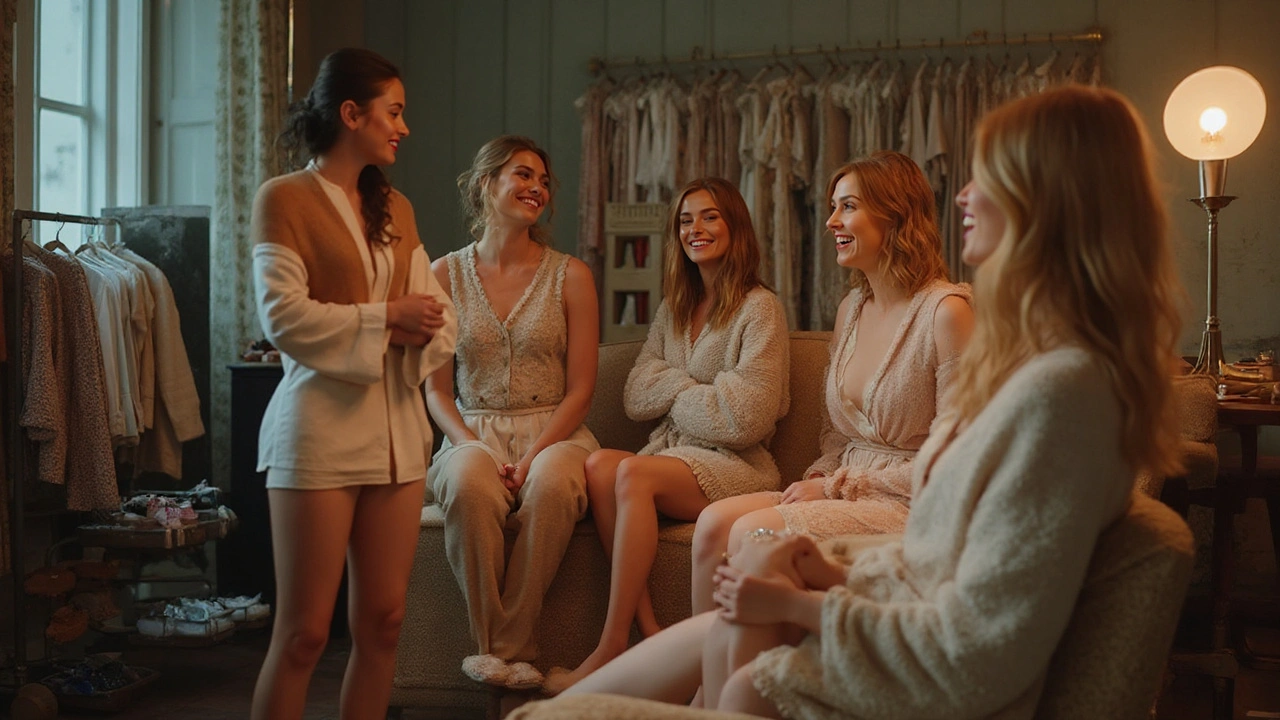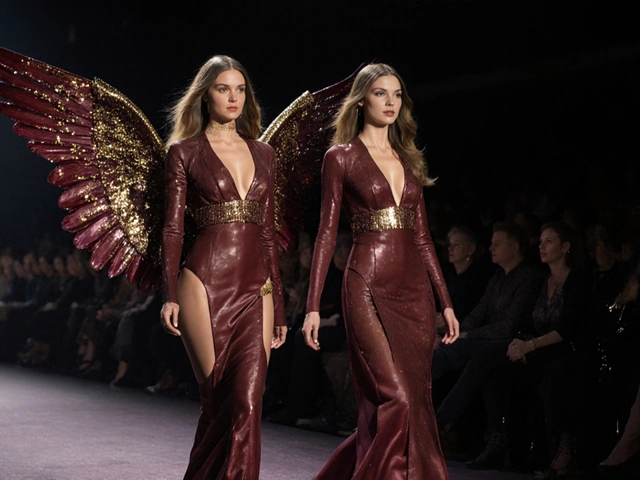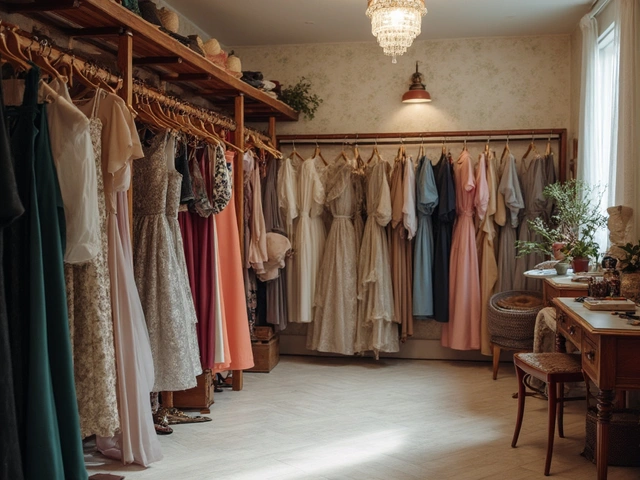Think ‘glamour model’ and most people picture champagne, red carpets, and a non-stop whirl of photoshoots in tropical locations. The truth? It’s so much more complicated and interesting, but not as footloose and glitzy as the outside world thinks. Most folks mix up the reality of daily hustle and business savvy that’s needed to stay on top with the glossy photos they scroll by on Instagram. The stereotypes stick, but they’re not even close to the lived experience, especially here in the UK, where the industry keeps evolving. It’s easy to get drawn in by tabloid dramas or wild reality TV. But what’s it really like? There are stories no one tells—the early mornings, the tough rejections, the complicated relationships with social media, the endless need for reinvention. So, let’s rip up the script and talk about what it’s actually like being a glamour model in 2025, and who these women really are once you strip off the filter.
Busting the Most Persistent Myths About Glamour Modelling
The first myth that just doesn’t die: glamour models have it easy. There’s this picture that modelling is pure fun, easy cash, quick fame, and nothing much except getting your makeup done for hours on end. In reality, that’s far off the mark. Take the UK market, for example. Ofcom’s most recent 2024 report said less than 5% of professional models make a full-time living solely from modelling. Most glamour models juggle multiple gigs, from influencer content and lingerie campaigns to brand events and even side hustles outside the industry.
Another stubborn myth: the lifestyle is shallow or unserious. Many women in glamour modelling are smart, driven, and manage their own businesses. It’s not rare to see a model answering emails between shoots, negotiating her own contracts, tracking expenses, and learning new digital editing skills. For every big brand you might see on social, there’s usually hours of behind-the-scenes prep—mood boards, outfit selection, finding the right photographer, sometimes even booking your own studio time. You’re not being handed opportunity on a plate; you’re constantly creating it.
The third myth? That glamour modelling is ‘just about looks’. Sure, appearance plays a part. But actual success has as much to do with building relationships in the industry, reading contracts carefully, and knowing how to market yourself as it does with physical features. In a world flooded with Snapchat and TikTok stars, the models who stick around long-term are the ones who can change with the trends, keep their integrity, and handle setbacks with grace. One 2024 London talent survey revealed that resilience and a strong personal brand now outsell just physical beauty alone.
Then there’s the idea that anyone can do it. The reality isn’t so simple. Even with the rise of platforms like OnlyFans and Patreon, competition has exploded. Models in 2025 compete not just with other established names but with new faces popping up daily from all over the world. There’s technical know-how too: shooting soft light, posing for best angles, social media algorithms—the learning curve never really levels out.
Last, there’s this myth of instant fame. The overwhelming majority of UK glamour models—according to a Model Alliance UK poll—either work years before achieving widespread recognition or never get noticed at all outside a tight online following. The biggest names worked their way up, struggled through dry spells, and often rebranded many times. So yes, a viral post can launch a career, but consistency is what keeps it afloat.
What a Glamour Model’s Day Actually Looks Like
If you’ve ever imagined a glamour model’s day as a series of spa appointments, lazy brunches, and champagne in the studio, you’re in for a surprise. Start with the basics: most models are up early, sometimes before dawn, especially if they’ve got a location shoot planned. The call sheets come with strict arrival times, and being late means smaller future gigs—word travels fast. “Organization is the difference between paid and unpaid,” says Chloe Sims, who’s worked as a full-time London model since 2018. Models keep strict planners, juggling social posts (timed for when their audience is online), content shoots, negotiation calls, and self-care all within tight windows.
You’ll find models prepping their own skin and hair, hauling bags of props or outfits to set, and sometimes doing their own makeup—especially on smaller shoots. Even with a stylist and MUA (makeup artist) on bigger jobs, last-minute changes and unexpected glitches are the norm. There are outfit mishaps, production delays, weather that ruins outdoor lighting, or brands suddenly wanting fresh, off-brief content. Learning to pivot without drama is a survival skill.
But it’s not all posing in gorgeous gear. There are hours of emails, booking travel, sorting invoices, editing photos, and updating portfolios. British models especially rely on digital portfolios, curated social feeds, and regular content on subscriber platforms. Modelling contracts rarely run long-term, so there’s a steady scramble for the next shoot or partnership.
Networking is another daily grind. It isn’t just about schmoozing at photographic studios or club nights. Most successful UK models spend hours connecting with new photographers, makeup artists, and PR managers on LinkedIn, WhatsApp, or even Discord channels. Good word of mouth can land more steady work than an agent ever will.
And there’s downtime, but not as often as you’d think. Many models squeeze in studies, creative hobbies, gym sessions (cardio and strength training are standard), and family time. The unpredictability means missed birthdays, holiday gigs, and the occasional last-minute overnight assignment. And nearly everyone has to deal with social media trolls or unwanted DMs—a reality that’s more exhausting than the glam shots show.

The Business Behind the Beauty: Earning, Saving, and Brand Building
Glamour modelling in the UK works more like building a freelance business than being an employee. Very few models—just 2% by industry estimates—have long-term contracts. The rest rely on one-off jobs, commission gigs, and self-promotion. Knowing the money side is just as important as learning to pose.
Rates in 2025 swing wildly. An established model in London might earn £800-£2,000 for a commercial lingerie campaign, but social media sponsored posts can pay even more if you’ve got followers in the six figures. On the other hand, some assignments (like working print magazines) pay as little as £200 a day, despite the glamour. Agencies take a cut—usually 15-20% in the UK. Many models have to hustle on premium platforms like Patreon or OnlyFans, where income depends on staying active and building loyal fans. The top 1% reportedly earn over £50,000 a month, but most are making a more modest side income.
Budgeting is crucial. Between shoot costs, travel, outfits, agency fees, and self-employed taxes, it’s easy to overspend. A savvy model keeps detailed spreadsheets, tracks all her costs, and saves at least 20% of each payment. Insurance, too—ask any model who’s missed shoots due to illness or travel mishaps. Since freelancers don’t get sick pay or holiday leave, building a financial safety net is standard advice from those with more than a few years in the game. Here’s a quick snapshot:
| Expense | Typical Monthly Cost (£) |
|---|---|
| Travel & Accommodation | 400 |
| Wardrobe/Props | 180 |
| Agency Fees | 180 |
| Portfolios/Sites | 65 |
| Insurance | 60 |
Those who build lasting brands think like entrepreneurs. They launch beauty lines, collaborate on podcasting, work as digital creators, or pivot into acting, presenting, or coaching new faces. Building a community is just as important as photoshoots: responding to DMs, collaborating with fans, and sharing real-life moments makes followers stick around. More agencies are scouting models who can tell their story, not just pose for a lens. In 2025, a unique style and voice are worth more than generic perfection.
Tax planning and legal contracts are a minefield too. The best advice is to find an accountant familiar with creative industries and never sign a contract without reading the fine print. Copyright, privacy rights, and licensing are big topics—if you don’t control your images, you might wake up someday to find your face on ads you never approved. Always get agreements in writing. It’s a world that rewards hustle, quick thinking, and a thick skin.
Pressure, Risks, and the Hidden Side of Public Glamour
No one likes to talk about the downsides, but they matter just as much. The pressure to stay ‘on’ is enormous. Social media means work follows you home—posting regularly, looking cheerful, responding to comments even on bad days. UK-based research from 2024 found 72% of glamour models reported some form of anxiety or burnout linked to online expectations.
Another risk is privacy loss. As a glamour model, your brand is yourself. Sharing personal moments can build connection, but it also opens the door to criticism or even safety threats. There are guidelines now from Model Alliance UK about privacy, watermarking, and filtering followers. But harassment, unwanted advances, and image theft still happen. Models swap tips constantly: never post your home location, blur background details, and keep some parts of your life offline.
Then, of course, there’s the body scrutiny. Standards are shifting, thankfully—curvy and diverse bodies are in demand in British campaigns. But many models still face harsh comments or pressure to fit unrealistic moulds. Eating disorders and mental health struggles aren’t uncommon. Support is available in London and Manchester through groups like Model Health UK (which runs workshops on positive body image and stress management).
The job can scramble relationships too, romantic or otherwise. Irregular hours, travel, or misunderstandings about what glamour modelling actually involves—especially for those in the more risqué side of the industry—can make dating or keeping old friends tricky. Communication and boundaries are key. Many models find tight-knit friendships in the industry itself, where there’s more understanding and real talk.
Safety on shoots is another issue. Vetting photographers, confirming locations, and using chaperones is everyday advice. Some London agencies keep a blacklist of unprofessional or unsafe contacts. More models use contracts and insist on mutual agreements before showing up for work. If any red flag pops up, having a backup contact or a check-in plan is standard—it’s not being paranoid, it’s being wise.
Burnout is a biggie. The constant chase for new gigs and approval online can get soul-crushing. Tips from long-time models: schedule offline days, delegate posts, take holidays even if you have to skip a paycheck, and diversify your activities (modelling alone isn’t always fulfilling). Finding balance is the only way to stay in the game long-term.

Tips & Takeaways: What You Need to Know Before Stepping In
So, if you’re thinking about trying the glamour model lifestyle or you’re just curious, here’s some priceless advice straight from the trenches. First, treat it like a real job. That means portfolios, clear contracts, proper invoicing, and a backup plan for quiet months. Keep your boundaries firm—know what you will, and won’t, do on shoots and stick to your comfort zone. That’s how you build respect and keep safe.
Work with reputable people. Google everyone before accepting a job, and check for genuine reviews or industry connections. Agencies can be helpful, but they’re not required—some models do just fine running things solo, but networking is a must. Classes in posing, styling, and using digital tech are worth every penny; you’ll save hours in post-shoot edits and up your game on set.
Invest in self-care and real connections. Online validation is fickle—your mental health should always come first. Make time for activities far from screens. Good sleep, nutrition, and movement are non-negotiable. Use block tools liberally on social. If you ever feel off or unsafe, trust your instinct and leave a shoot quietly—no pay is worth risking your wellbeing.
Stay curious. Trends shift fast. What’s in demand this summer could be gone by Christmas. Reading up on fashion, tech (yes, AI is now helping models pose and edit content), and digital marketing keeps you ahead of the pack. Follow UK glamour icons on social—like Jodie Marsh or Danielle Lloyd—for real-life wisdom and track new faces for inspiration. The more you see, the more ideas you’ll have for your own brand.
Most of all, know that the glamour model lifestyle is as varied as the women who lead it—some love the limelight, some treat it as a business, and some dip in and out according to life’s other demands. It’s not all shiny photos and perfect hair. It’s hard work, quick pivots, close friendships, and endless self-reinvention. Break the mould, own your story, and you’ll find it’s a path that may not be for everyone, but for the right women, it’s a wild, rewarding ride.









August 7, 2025 AT 20:06
Sean Marcus
Oh boy, another glamour model exposé. I gotta say, most of this stuff sounds like the usual fuss people love to make over things they barely understand. The myths? Sure, they’re rampant. But hidden truths? Probably just the usual behind-the-scenes drama jazzed up for clicks.
Honestly though, it’s always refreshing to see someone tackling the UK scene with some nuance instead of the nonstop glam and gloss. I do wonder if the author really digs deep or if we're just scratching the surface.
Still, gotta admit it's kind of entertaining to see those myths getting taken down. I ain't gonna dive in too deep but props to whoever's sharing perspective.
Anyway, I’m pretty lazy about these topics but I’ll admit, it’s a better read than half the fluff I see online. ¯\_(ツ)_/¯
August 8, 2025 AT 04:26
Carli Lowry
Wow, peeling back the layers of what most see as pure superficiality is so vital. The glamour model life is often painted with one broad brush, lacking the delicate strokes of reality that truly color the experience.
These myths we chase often shroud the real struggles and triumphs that aren't visible in glossy magazines or staged photoshoots. Sharing insight from within the UK scene is especially valuable, given its distinctive cultural nuances.
What I admire most here is the willingness to highlight not just the sugar-coated allure but the grit that supports it. This nuanced perspective invites a respectful understanding that most outsiders never consider.
Thanks for bringing this discussion to light; it’s important to be storytellers who elevate, not just exploit.
August 8, 2025 AT 21:06
Rich Beatty
This is an interesting perspective! The glamour model lifestyle always gets misrepresented, and it’s great to have someone who’s been around the UK scene clear some misconceptions.
Honestly, it’s a tough career path with pressures that aren’t obvious at first glance. Confidence and professionalism go hand in hand with a lot of the glam stuff we see. It’s not just about looking good; it’s also about navigating contracts, networking, and maintaining mental health.
If anyone’s considering this line of work, my advice is to really educate yourself and connect with people who’ve lived it. Stories like this are gold for understanding the full picture. Keep sharing!
August 9, 2025 AT 02:40
Selene Becmar
Ah, the eternal dance between surface glam and hidden melancholy, isn't it? One is seduced by the shimmering fantasy, yet underneath lies the complex labyrinth of identity and perception.
This piece boldly confronts the illusions society clings to, unmasking truths often left in shadows. It transcends mere revelation by inviting us into a nuanced conversation about image, value, and the commodification of allure in a world obsessed with appearances.
One might argue that such work exposes the dialectical tension between empowerment and exploitation that defines the glam model’s experience — a dialogue rarely afforded poetic reflection in the mainstream.
In this exposure of myths, we are compelled to question our own gaze and complicity in perpetuating these narratives.
August 10, 2025 AT 06:26
Enuma Eris
This write-up cool. Many think glamour model life is just party and easy money, but nah. It’s hustle, discipline and sometimes lonely. UK scene different but some challenges universal.
Respect to author for shedding light on real side. Helps break false ideas people get from social media. Real story is mix of glam and grind.
People outside usually no get this balance. So articles like this needed. Keeps conversation grounded and respectful for models and fans.
August 11, 2025 AT 10:13
George Christopher Ray
It is imperative to address the pervasive misconceptions that currently dominate the discourse surrounding the glamour model lifestyle. Such narratives often fail to acknowledge the intricate layers of professionalism and personal sacrifice inherent in this line of work.
I commend the author for an articulate exposition on these matters. However, it is essential to maintain a formal recognition that behind the facade lies a demanding career path that requires not only aesthetic commitment but also strategic navigation through contractual and social dynamics.
This article contributes meaningfully to a more mature, responsible understanding.
August 12, 2025 AT 14:00
Cody Deitz
Thanks for sharing this inside perspective! I've always been curious about what it really takes beyond the photoshoots and glamour.
Understanding the myths and misconceptions helps to humanize and appreciate the effort behind what many dismiss as superficial. It's encouraging to see someone addressing both the struggles and successes.
I'm especially interested in any tips you might have for navigating the emotional highs and lows this career can bring. That side is often overlooked.
Looking forward to hearing more and learning from those experiences to better support the community.
August 14, 2025 AT 07:40
Ronnie Chuang
Lol this whole glamour model thing is way overhyped. Most of the 'real story' sounds like just drama people want to sell. Like, not everything is an epic saga, sometimes it’s just what it is – a job.
I mean, seriously, how much is left to discover? Models model, people look, money exchanges. End of story. They try to act like it’s a deep complicated lifestyle but nah, it’s just people doing their thing.
Kind of tired of all these pseudo revelations. Not buying the whole glam as struggle angle, but hey, that’s just my take.
September 4, 2025 AT 17:33
Melissa Perkins
This absolutely resonates with me. It’s so important to dismantle the stereotypes and open conversations about the realities beneath the surface.
Glamour modeling, like many professions rooted in visual presentation, carries its own emotional complexities and societal judgments. The courage to share these perspectives helps us dialogue about respect, agency, and nuance.
Inviting collaboration, positive support, and understanding can transform how society views such careers — moving past stigmas into appreciation.
Appreciate the author’s honesty and invitation to rethink our assumptions.
September 5, 2025 AT 21:20
j t
To truly understand the glam model lifestyle, one must venture beyond the superficial allure that the masses consume daily through social media and glossy magazines. The narrative is layered, rich with not only moments of glitz but also shadows cast by misconstrued societal perspectives and internal struggles concealed from public view.
I assert that the author’s attempt to unravel myths and shed light on this complex tapestry serves an essential function in bridging misunderstanding — a task far from trivial. Culture often paints models with a brush too broad, neglecting the individual journeys marked by personal challenges and resilience.
Moreover, it behooves readers to question their own assumptions in perusing such narratives, understanding that reality often defies simplistic categorization.
This post prompts a deeper inquiry that is both necessary and enlightening.